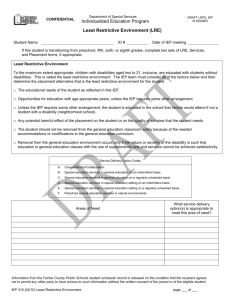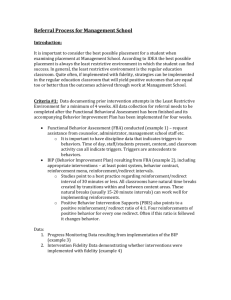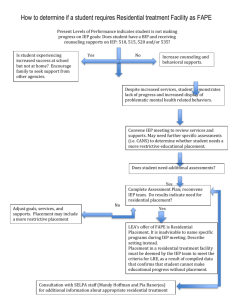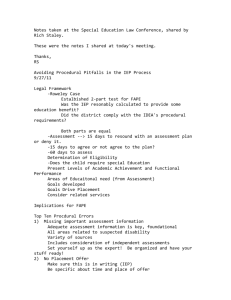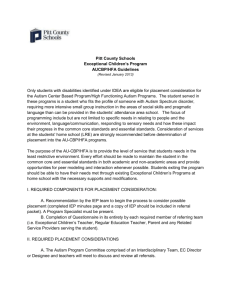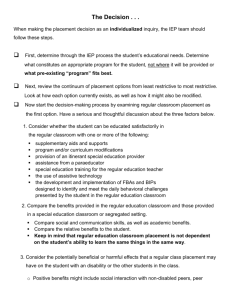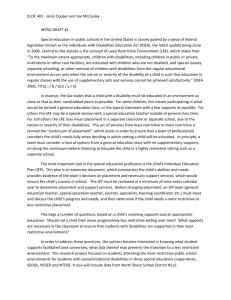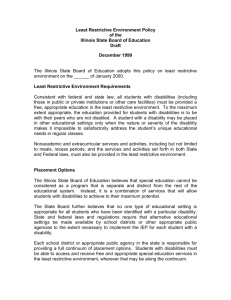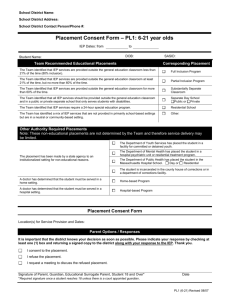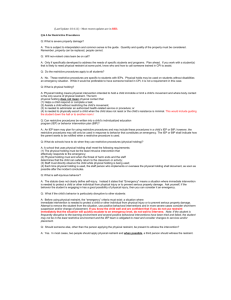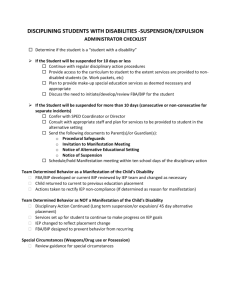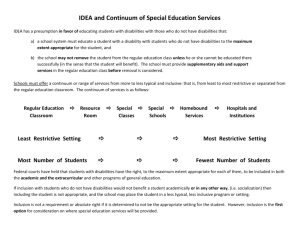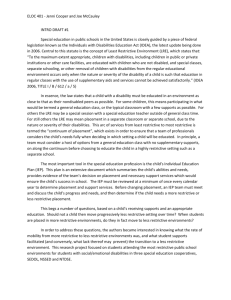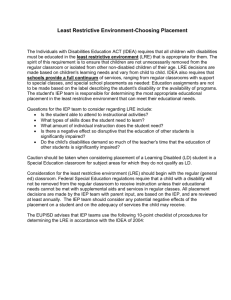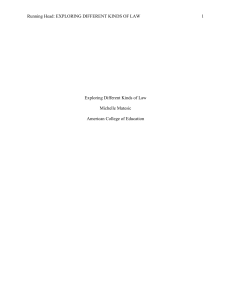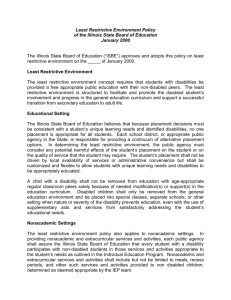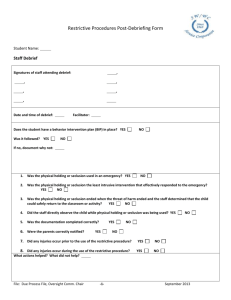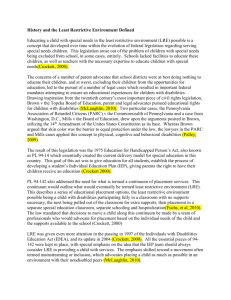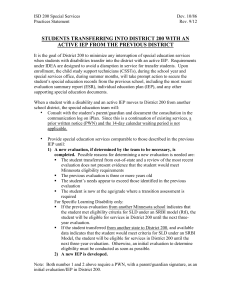Least Restrictive Environment Process Step 1 – Utilize all available
advertisement
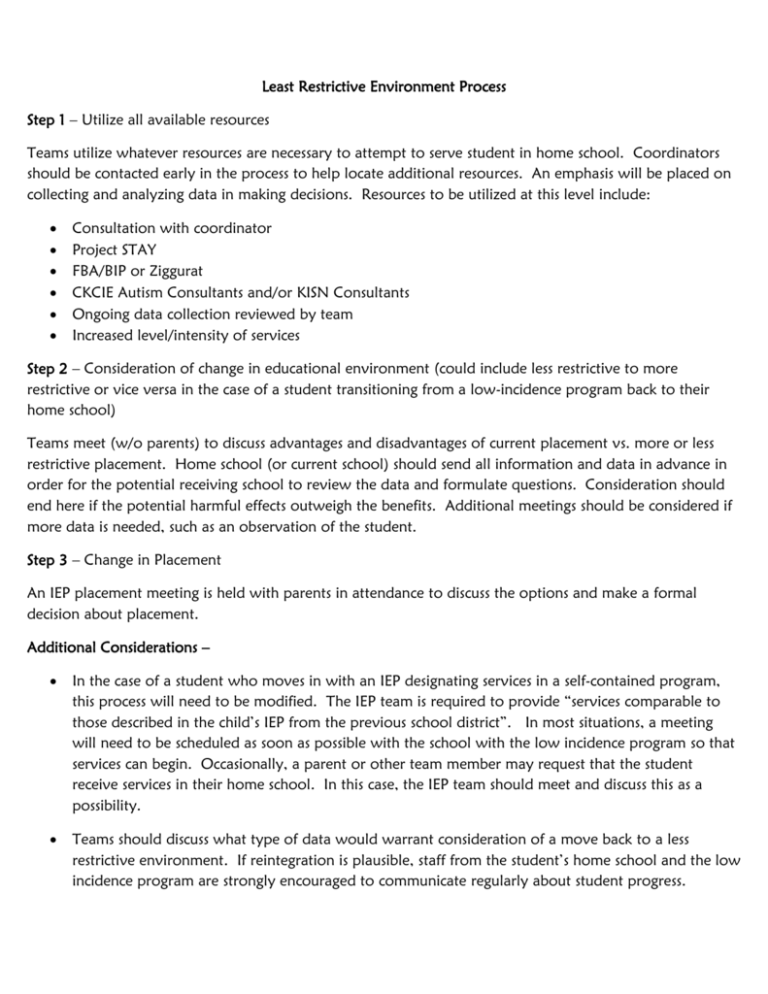
Least Restrictive Environment Process Step 1 – Utilize all available resources Teams utilize whatever resources are necessary to attempt to serve student in home school. Coordinators should be contacted early in the process to help locate additional resources. An emphasis will be placed on collecting and analyzing data in making decisions. Resources to be utilized at this level include: Consultation with coordinator Project STAY FBA/BIP or Ziggurat CKCIE Autism Consultants and/or KISN Consultants Ongoing data collection reviewed by team Increased level/intensity of services Step 2 – Consideration of change in educational environment (could include less restrictive to more restrictive or vice versa in the case of a student transitioning from a low-incidence program back to their home school) Teams meet (w/o parents) to discuss advantages and disadvantages of current placement vs. more or less restrictive placement. Home school (or current school) should send all information and data in advance in order for the potential receiving school to review the data and formulate questions. Consideration should end here if the potential harmful effects outweigh the benefits. Additional meetings should be considered if more data is needed, such as an observation of the student. Step 3 – Change in Placement An IEP placement meeting is held with parents in attendance to discuss the options and make a formal decision about placement. Additional Considerations – In the case of a student who moves in with an IEP designating services in a self-contained program, this process will need to be modified. The IEP team is required to provide “services comparable to those described in the child’s IEP from the previous school district”. In most situations, a meeting will need to be scheduled as soon as possible with the school with the low incidence program so that services can begin. Occasionally, a parent or other team member may request that the student receive services in their home school. In this case, the IEP team should meet and discuss this as a possibility. Teams should discuss what type of data would warrant consideration of a move back to a less restrictive environment. If reintegration is plausible, staff from the student’s home school and the low incidence program are strongly encouraged to communicate regularly about student progress.
